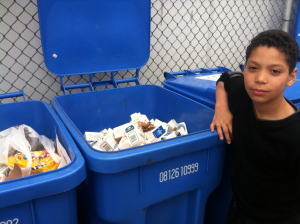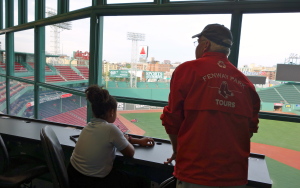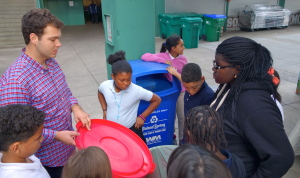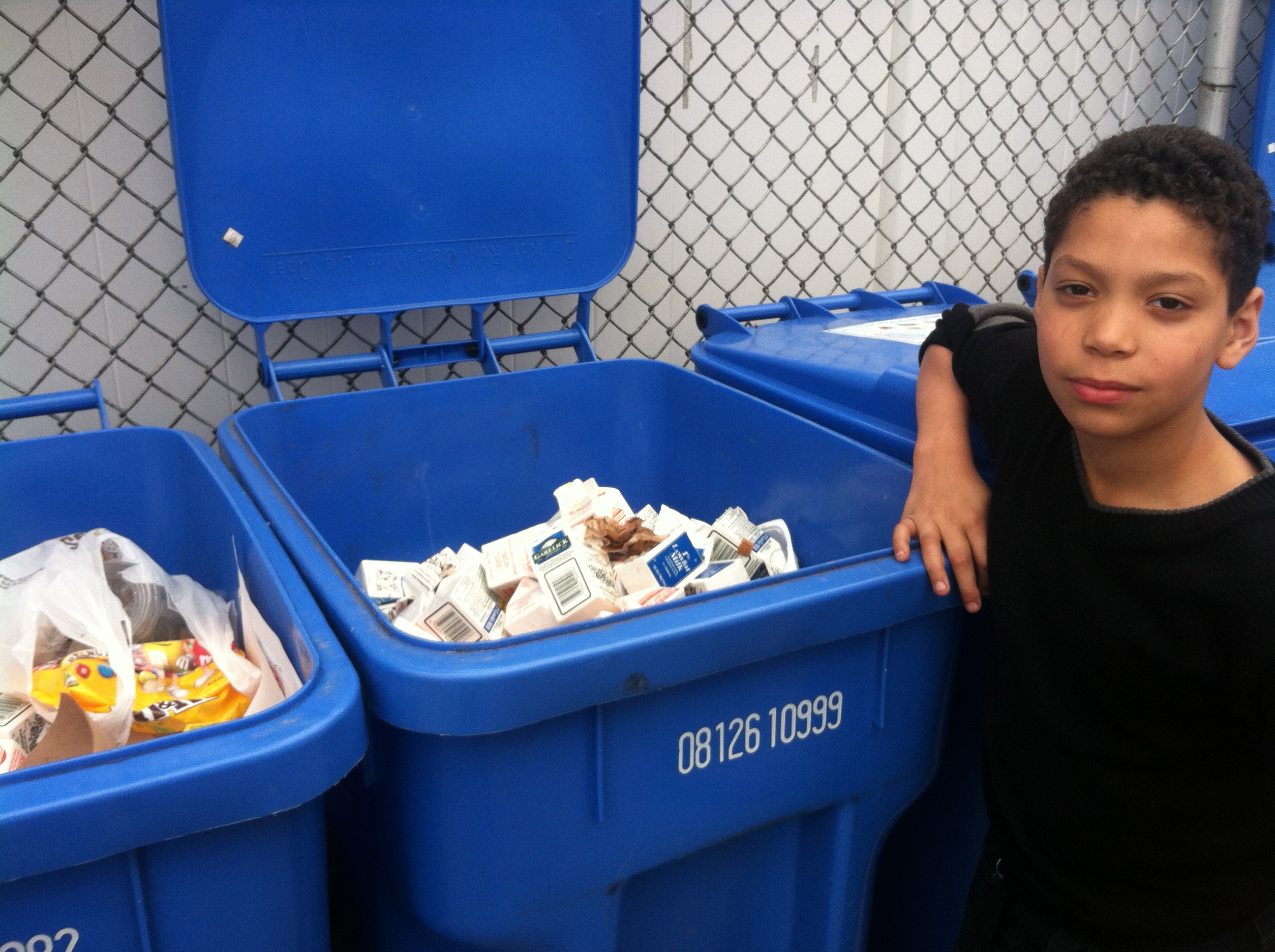Sumner Recycling Students Tour Fenway Park
The typical morning for a 5th grader in a Boston Public School goes something like this: arrive to school via bus, grab a breakfast pack, eat while finishing homework, and hang out with friends in homeroom before class starts for the day. At the Charles Sumner School in Roslindale, 5th grader Raciel Carbonnel’s morning looks a little different. He stands beside a waste station to help 3rd grade students decide what breakfast waste goes where: dump cereal, milk, and juice into strainer over sinks, and separate the “wet” and “dry” recycling from the trash. Sounds easy enough, right? But students and staff need a reminders, and Raciel and his 15 Recycling Club peers are happy to work hard to provide those reminders.
These students are not earning an allowance or even stickers for their work; some are drawn towards the creativity that recycling and reuse inspire. But more than anything, the recycling students want to protect the Earth for the future, combat global climate change, and help better the world.

At lunchtime the program continues and in the cafeteria there are three teams, organized by a student recycling leader, who are responsible for taking care of the recycling station.Edward Baez’ team has the task of emptying all of the recycling bins/compost in the cafeteria. The other two teams led by William Tejeda and Joskar Santana empty and replace bag liners in the trash and recycling bins on the 1st and 2nd floors. On Wednesdays, teacher leader Ruben Carrizosa takes the 96 gallon recycling bins to the curb for pickup (they are a little too big for the 5th graders), and other teacher leader, Anne DeVita, trains the Recycling Club student leaders. The Club is working on a student led training for all classes in the school – hoping it will help educate staff and students about what can and can’t be recycled. Recycling Club meets once a month during a working lunch to discuss what is working and what is not, and to celebrate hard work and successes.

The Sumner Recycling Club was rewarded for their exceptionally hard work and for going above and beyond to green their school with a behind the scenes sustainability field trip to Fenway Park. The green tour of the “Green Monster” was led by Fenway’s Manager of Facilities Services & Planning who outlined the innovative technologies the Red Sox are using to reduce waste, energy, and water. Students saw solar panels that heat the hot water in Fenway Park, which is used for hand washing and cooking hot dogs. Fenway recently upgraded the spectator stadium lighting to LED efficient light bulbs, the same bulb used in the iconic Citgo sign just down the street. The flashy technology was fun and all, but the thing the students were most eager to see were the small red composting bins from behind the concession stand. The barrels had fun pictures of banana peels and bread on them to help staff sort the food waste properly…maybe something the students can bring back to their own cafeteria.

The Charles Sumner School is one of five BPS schools slated to start a food separation and composting program in January 2015. Anne and Ruben have already prepared the school for composting by implementing bins for separation, and training the students on what can be recycled, composted, and trashed. These Sumner students will be experts by the time they are scheduled to receive food waste pickups next year, and by June the students are excited to see the building produce virtually no trash!
After touring the Red Sox stadium, I asked the students if they could handle the recycling from the nearly 40,000 fans at every game in Fenway Park. There was no hesitation – a resounding “YES!” from all of them.
